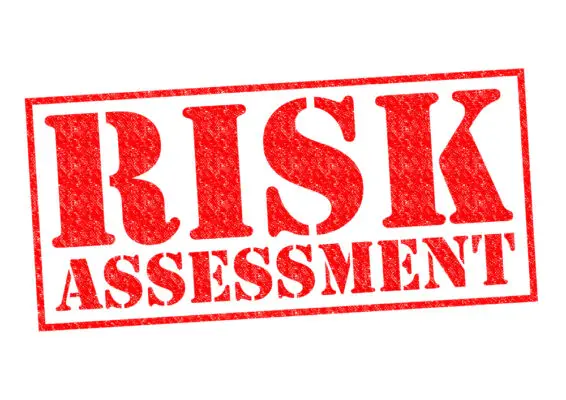Cyber insurance risk assessment is one of the processes in today’s digital landscape. With the rapid rise of cyber threats, organizations are increasingly exposed to potential financial losses and reputational damage.
This necessitates a comprehensive evaluation of an organization’s cyber risk profile and ability to mitigate and respond to cyber incidents.
A cyber insurance risk assessment aims to identify, analyze, and quantify an organization’s exposure to various cyber risks. It involves evaluating the effectiveness of existing cybersecurity measures, assessing vulnerabilities, and determining potential impacts on critical assets.
Conducting this assessment, organizations can better understand their unique risk landscape and make informed decisions about purchasing appropriate cyber insurance coverage.
This article will explore the importance of a cyber insurance risk assessment and its role in mitigating financial losses associated with data breaches, ransomware attacks, or other cybersecurity incidents.
It will also discuss the steps involved in conducting a thorough assessment and provide insights into evaluating an organization’s specific needs for cyber insurance coverage.

What is a cyber insurance risk assessment?
A cyber insurance risk assessment is a comprehensive evaluation of an organization’s vulnerabilities and potential financial losses related to cyber threats. It aims to quantify the extent of risk exposure and inform the development of effective insurance policies.
It plays a crucial role in an organization’s cyber risk management journey by identifying areas that require attention and investment to enhance cybersecurity measures.
The assessment considers various aspects such as cyber-attack scenarios, past cyber events, cybersecurity breaches in similar organizations, and potential costs associated with a cyber incident.
Analyzing these factors, organizations can gain insights into their current level of cybersecurity preparedness and identify security considerations that need improvement.
Furthermore, the assessment assists in developing a robust cybersecurity incident response plan and selecting appropriate cybersecurity solutions to mitigate risks effectively.
Why do you need a cyber insurance risk assessment?
Conducting a comprehensive evaluation of potential vulnerabilities and threats within an organization’s digital infrastructure is crucial to determine the level of exposure to potential cyber incidents accurately.
A cyber insurance risk assessment plays a vital role in this process as it helps organizations understand their cybersecurity posture and identify areas for improvement.
A cyber insurance risk assessment provides valuable insights into an organisation’s overall cyber risk profile by assessing various factors such as the organization’s security controls, data protection measures, incident response capabilities, and employee awareness.
Furthermore, conducting a cyber insurance risk assessment is important because it helps organizations determine if they need cyber insurance coverage. Cybersecurity insurance providers often require organizations to assess risk before offering coverage.
This assessment helps insurers understand the level of risk associated with insuring an organization against catastrophic losses resulting from cyber incidents.
Additionally, by identifying potential vulnerabilities and threats through a risk assessment, organizations can take proactive steps to mitigate these risks. This can include implementing stronger security measures, training employees on best practices for cybersecurity, and developing robust incident response plans.
A cyber insurance risk assessment is essential for organizations seeking to protect themselves against today’s diverse cyber threats.
It enables them to understand their cybersecurity posture better, obtain appropriate insurance coverage, and take necessary steps to improve their security resilience.
How do you conduct a cyber insurance risk assessment?
To comprehensively evaluate potential vulnerabilities and threats within an organization’s digital infrastructure, it is essential to follow a systematic process that involves identifying and analyzing key elements such as security controls, data protection measures, incident response capabilities, and employee awareness.
This process is known as a cyber insurance risk assessment. Conducting a cyber insurance risk assessment enables organizations to assess their cyber risk profile and determine the adequacy of their current security measures.
Insurance carriers require this assessment to accurately evaluate the organization’s exposure to cyber threats and determine appropriate levels of cyber coverage. The assessment involves evaluating the organization’s threat landscape.
Also, Identifying potential security risks, assessing existing safeguards, and determining any gaps in coverage or liability protection. Organizations can make informed decisions about their cybersecurity measures and ensure adequate cyber liability coverage by conducting a thorough cyber insurance risk assessment.
| Key Elements | Description |
|---|---|
| Security Controls | Assessing the effectiveness of technical controls such as firewalls, intrusion detection systems, etc. |
| Data Protection Measures | Evaluating encryption methods used for sensitive information storage and transmission |
| Incident Response Capabilities | Analyzing the organization’s ability to detect and respond to cybersecurity incidents |
| Employee Awareness | Assessing employee training programs on cybersecurity best practices |
Table: Key Elements in Cyber Insurance Risk Assessment
What is cyber insurance?
Cyber insurance is insurance coverage that helps companies mitigate the financial risks associated with cyber-attacks and data breaches.
It provides financial protection for legal fees, forensic investigations, customer notification costs, and public relations efforts.
When shopping for cyber insurance, companies should carefully consider their specific needs and assess the level of risk they face to determine the appropriate amount of coverage.
Factors to consider include the size and nature of the business, the value of its digital assets, and industry-specific regulations or compliance requirements.
It is important to balance obtaining enough coverage to protect against potential losses while avoiding over-insurance that may result in unnecessary costs.
How does cyber insurance help companies mitigate risk?
One of the ways in which companies can mitigate risk is through the utilization of cyber insurance. Cyber insurance protects businesses financially during a cyber attack or data breach.
Businesses can alleviate some of the financial burdens associated with cyber risks by transferring some of the potential financial losses to an insurance company.
- Cyber insurance policies cover various aspects, such as legal fees, forensic investigations, and customer notification costs.
- This helps business owners focus on their core operations without worrying about the substantial financial impact of a cyber incident on their organization.
- Cyber insurance encourages proactive risk management practices such as privileged access management and regular security assessments.
- Insurance companies often provide resources and guidance to help businesses prevent future incidents and recover from attacks effectively.
Cyber insurance is a valuable tool in mitigating risks associated with cyber threats by providing financial protection and promoting proactive risk management strategies.
How do I shop for cyber insurance?
When shopping for cyber insurance, it is important to carefully evaluate the available coverage options and consider policy limits, deductibles, and exclusions.
Cyber insurance policies can vary widely in terms of coverage and cost, so it is crucial to assess the specific needs of your business before making a decision. Start by conducting a thorough cyber insurance risk assessment to identify potential vulnerabilities and determine the level of coverage required.
Consider the types of risks your business faces, such as data breaches or ransomware attacks, and look for policies that specifically address those risks. Additionally, compare different providers to find the best combination of coverage and cost.
It is also recommended to consult with cybersecurity professionals or insurance brokers who specialize in cyber insurance to ensure you make an informed decision regarding your business’s cybersecurity insurance needs.

How much cyber security insurance is enough?
Determining adequate coverage for cybersecurity incidents necessitates a comprehensive evaluation of potential vulnerabilities and an understanding of the extent to which businesses may be affected by data breaches or ransomware attacks.
Cyber insurance risk assessment plays a crucial role in this process. Organizations need to assess their unique risks, such as the value and sensitivity of their data, their industry’s regulatory requirements, and their technological infrastructure.
They should also consider the financial implications of potential cyber incidents, including costs associated with legal fees, forensic investigations, notification expenses, public relations efforts, and possible business interruption.
Additionally, businesses should factor in the evolving nature of cyber threats and allocate sufficient funds for ongoing monitoring and incident response capabilities.
Ultimately, determining how much cyber security insurance is enough requires careful consideration of these factors to protect against potential losses from cyber incidents adequately.
Evaluating Your Cyber Insurance Needs
To accurately determine the level of cyber insurance coverage required, it is imperative to conduct a comprehensive evaluation of your organization’s specific cyber risk profile.
This process, known as cyber insurance risk assessment, involves assessing potential threats and vulnerabilities that could compromise your organization’s digital assets and information systems.
Evaluating your cyber insurance needs requires a thorough understanding of your organisation’s risks, such as data breaches, system disruptions, or financial losses resulting from cyberattacks.
Aalyzing these risks, you can identify their potential impact on your business operations and reputation.
It is essential to consider both first-party claims (direct losses suffered by your organization) and third-party claims (losses suffered by others due to your actions or negligence).
Additionally, reviewing existing business insurance policies is crucial to determine if a separate cyber insurance policy should address any gaps in coverage custom-tailored for your specific needs.
To ensure adequate coverage, consulting with various cyber insurance providers and underwriters who specialize in this field is recommended.
Extensive research into the current cyber insurance coverage literature can also provide valuable insights into best practices and industry standards when evaluating your organization’s cyber insurance needs.
Frequently Asked Questions
What are the key components of a cyber insurance risk assessment?
The key components of a cyber insurance risk assessment include identifying and evaluating potential cyber threats, analysing vulnerabilities, determining the potential impact on the organization, and developing risk mitigation strategies.
How often should a cyber insurance risk assessment be conducted?
A cyber insurance risk assessment should be conducted regularly to ensure coverage remains relevant and effective. The frequency of assessments may vary depending on factors such as industry regulations, technological advancements, and changes in the threat landscape.
What factors should be considered when determining the coverage limits for a cyber insurance policy?
Factors to consider when determining coverage limits for a cyber insurance policy include the organization’s size, industry, type of data stored, potential financial losses, regulatory requirements, and the cost of recovery measures.
What are the common exclusions or limitations in a cyber insurance policy?
Common exclusions or limitations in a cyber insurance policy may include acts of war, intentional acts by the insured, failure to implement adequate security measures, and losses resulting from pre-existing conditions or known vulnerabilities.
Are there any industry-specific considerations when conducting a cyber insurance risk assessment?
When conducting a cyber insurance risk assessment, it is important to consider industry-specific factors that may impact the likelihood and severity of cyber risks.
This includes analyzing the unique vulnerabilities, regulatory requirements, and potential financial losses within a particular industry.

Conclusion
A cyber insurance risk assessment is crucial for organizations to evaluate their vulnerabilities and establish the necessary measures to mitigate risks.
Conducting such an assessment allows businesses to understand the magnitude of their exposure and determine appropriate coverage requirements.
Companies can identify gaps and implement effective preventive measures by thoroughly assessing their cybersecurity infrastructure, systems, and processes.
Cyber insurance provides financial protection against losses from cyber incidents, making it an essential component of a comprehensive risk management strategy in today’s digital landscape.

Chris Ekai is a Risk Management expert with over 10 years of experience in the field. He has a Master’s(MSc) degree in Risk Management from University of Portsmouth and is a CPA and Finance professional. He currently works as a Content Manager at Risk Publishing, writing about Enterprise Risk Management, Business Continuity Management and Project Management.

